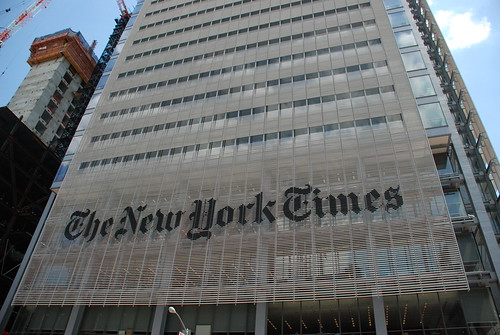Publishers who cheered The New York Times decision last week to build up a wall in front of its content should be considerably less cheery about the news emanating from Newsday. The Long Island daily has admitted that it has signed up just 35 paying subscribers since it put most of its content behind a pay wall in October. At $260 per subscriber per year, that amounts to just $9,000 in annualized revenue for a relaunch that reportedly cost $4 million.
 There’s more to the story, of course. The total audience of potential online subscribers to Newsday is pretty small, given that the service is free to subscribers to Optimum Cable, which is owned by Cablevision. Cablevision bought Newsday for $650 million in May, 2008 after a bidding war. Newsday said Optimum Cable cover 75% of Long Island, meaning that just about everyone who would want to read Newsday online can already read it. The company also said its goal was never to amass a huge audience but rather to increase engagement and improve advertiser value by focusing on local residents.
There’s more to the story, of course. The total audience of potential online subscribers to Newsday is pretty small, given that the service is free to subscribers to Optimum Cable, which is owned by Cablevision. Cablevision bought Newsday for $650 million in May, 2008 after a bidding war. Newsday said Optimum Cable cover 75% of Long Island, meaning that just about everyone who would want to read Newsday online can already read it. The company also said its goal was never to amass a huge audience but rather to increase engagement and improve advertiser value by focusing on local residents.
Still, you have to wonder about the wisdom of the paywall strategy, given the sacrifices made to implement it. Editors Weblog says traffic to the site is down by a third since October. However, PaidContent.org says the drop off is only on the order of 10%. Either way, Newsday has traded off a lot of eyeballs for a small number of credit card numbers and unless its advertising rates have increased proportionately, the paywall is probably a net loser at this point.
Newsday is sticking by its guns and saying that the slow ramp up is neither surprising nor a problem. “Given the number of households in our market that have access to Newsday‘s web site as a result of other subscriptions, it is no surprise that a relatively modest number have chosen the pay option,” the company said in a statement that called into question why such a strategy was desirable in the first place.
Give Newsday credit for being a pioneer, though. The industry has been buzzing about paywalls for the last year and the company at least had the cojones to do something. You do have to wonder about the timing, though. Publisher Terry Jimenez reportedly told the staff last week that Newsday lost $7 million in the first three quarters of last year. It’s now embroiled in a labor dispute with unions that are refusing to accept a 10% pay cut. under the circumstances, this seems like an odd time to make a bet-the-business decision.
iPad is Here. You Can Breathe Again
Our reaction to Apple’s iPad announcement yesterday was summed up in our tweet: “It’s a big iPod Touch? Really? That’s it??”
For a product that was generating over 200 tweets per minute in the hours leading up to the launch event, the reality of the iPad underwhelmed us. Perhaps we’ve just learned to expect bigger things from Apple (although the iPad certainly is bigger than the iPhone – by several inches).
The commentators we read see more potential, however. Nicholas Carr, who’s been documenting the shift of data and applications from the desktop to the cloud, sees the iPad as a potential paradigm shift. In Carr’s view, this product completes the transformation of the end-user device from personal computer to window on the Internet. Unlike a laptop, the iPad relies upon software delivered over the Internet for most of its functionality. The large screen and persistent connection could change user behavior, he observes. People will get into the habit of expecting words, images and sound to be delivered whenever they need it in a slim device that fits in a briefcase, although not a purse.
Ken Doctor evaluates the pluses and minuses of yesterday’s announcement. The good news for publishers is that readers will finally carry around a device that delivers an experience similar to what they have traditionally received from a magazine or tabloid newspaper. That can’t be bad for publishers who are accustomed to working in that format. Doctor also sees the iPad as a “magnet for marketing dollars” from companies that can finally deliver a television-like experience to a handheld device. The tablet may also rejuvenate long-form reading, which has suffered as continually distracted readers have learned to consume information in sips rather than draughts.
Doctor worries, however, that media companies were not a bigger part of the launch. Apple seemed to play it safe, touting the iPad as a work machine but imbuing it with a clumsy virtual keyboard and incorporating features that will obviously be appealing to gamers. The company claims to have more than 140,000 applications in its iTunes store. Publishers who are accustomed to having the biggest brand in their markets are going to get lost in there unless Apple pulls them out of the muck and gives them some visibility. At least at this point, that isn’t happening.
David Coursey looks at the iPad from more of a technologist’s perspective with Six Reasons You Want an iPad, Six Reasons You Don’t. He notes, “Apple wants you to pay $829 for the 64GB device, plus monthly wireless fees for AT&T’s 3G. The first year total: $1,189.” Of course, the iPhone was also vastly overpriced when first announced.
Meanwhile, Amazon last week revised its royalty policy for self-published authors and small presses. Amazon could be ready to make a play for the loyalty of publishers who were shut out of the Apple party. Its licensing terms need to be friendlier, but it’s already showing a willingness to make those changes.
By the way, Ken Doctor’s new book, Newsonomics: Twelve New Trends That Will Shape the News You Get, will be available next week. We just received our review copy in the mail and while we haven’t had a chance to pore through it yet, we’re confident will contribute important new insights on the transformation of news from print to digital format.
Miscellany
Publishers that seemed to be ready for the toe tag at this time last year are staging some remarkable comebacks. Following hot on the heels of MediaNews Group Inc.’s announcement last week that it will enter a controlled bankruptcy and quickly reemerge in better condition, McClatchy said it has reached a debt restructuring deal with its creditors that will give it more time to get its debts under control. The owner of the Miami Herald, Sacramento Bee, Kansas City Star and 27 other dailies has shifted its obligations to extend its repayment deadlines for a couple of years and says that 90% of its creditors have agreed to the plan. Year-over-year revenue is still falling at an alarming rate of 20%, but McClatchy said the rate of decline has slowed and it is getting its expenses under control. Its stock closed at $5.60 yesterday, up 1,600% from its 2009 low of 35 cents. Don’t you wish you could turn back the clock?
The good news in McClatchy’s shrinking revenue is that the percentage coming from online sources has grown. CEO Gary Pruitt told an investor conference call yesterday that online advertising now makes up 16% of the company’s total revenues. Perhaps more importantly, Pruitt said that 44% of digital revenue is online-only, meaning that the company is having success seeking out new advertisers and not simply selling discounted Web packages to print customers. He also said the company is ready to experiment with a pay wall, but is looking to the New York Times example for guidance.
Young people are reading newspapers online less than they used to. That’s the finding of an IBM survey of 3,327 people internationally (900 of them in the United States) as reported on Poynter last week. The good news is that people over 55 are increasing their consumption of online news, but that statistic disguises a more ominous trend. Overall consumption of online sources is up for the population as a whole, which presumably means fewer people are getting their news in print. Poynter’s Dorian Benkoil says the trend suggests that news organizations may have less time than they think to shift their strategies to a digital-first approach. separately, new research from Nielsen shows that consumers spent an average of five hours and 35 minutes on social networking sites in December, 2009, an increase of 82% from December 2008. Facebook is now second only to the telephone in the medium people use most often to reach out to friends and family, and it isn’t behind by much. The problem that creates for news organizations is that they can’t control what happens on Facebook but clearly must adopt strategies to deliver more information that way.




 Thank goodness we have something to fill up the cold, light-deprived days of January: speculation about a new Apple tablet computer. Apple’s got a big press event scheduled for Jan. 26 and the blogosphere is overflowing with rumors that it will announce a flat-screen portable computer that’ll make the Amazon Kindle look like an Etch-a-Sketch.
Thank goodness we have something to fill up the cold, light-deprived days of January: speculation about a new Apple tablet computer. Apple’s got a big press event scheduled for Jan. 26 and the blogosphere is overflowing with rumors that it will announce a flat-screen portable computer that’ll make the Amazon Kindle look like an Etch-a-Sketch.


